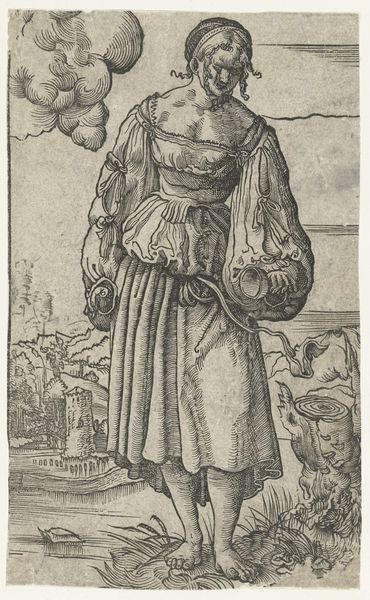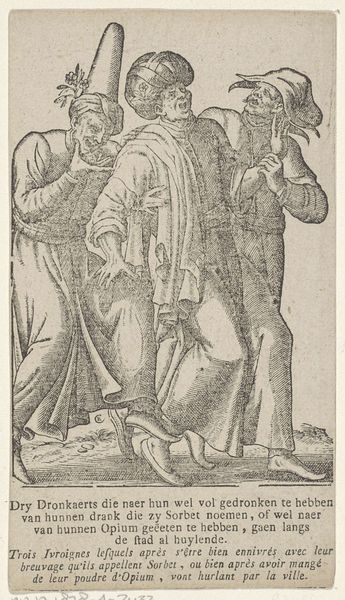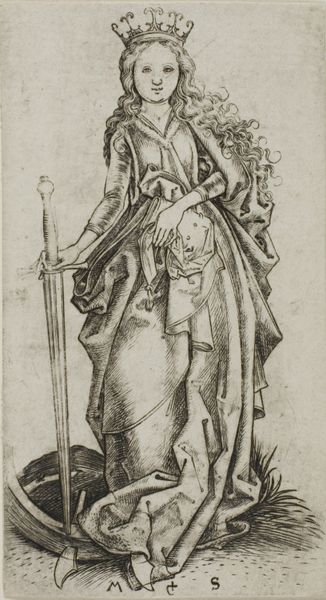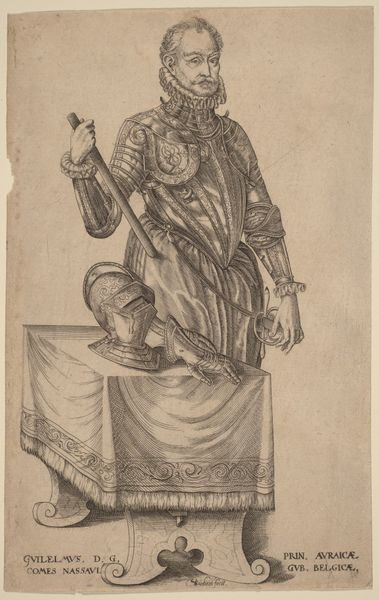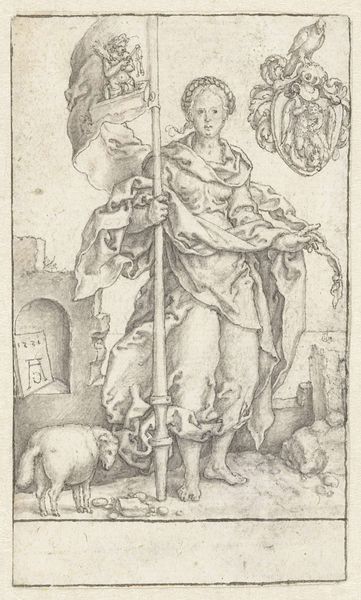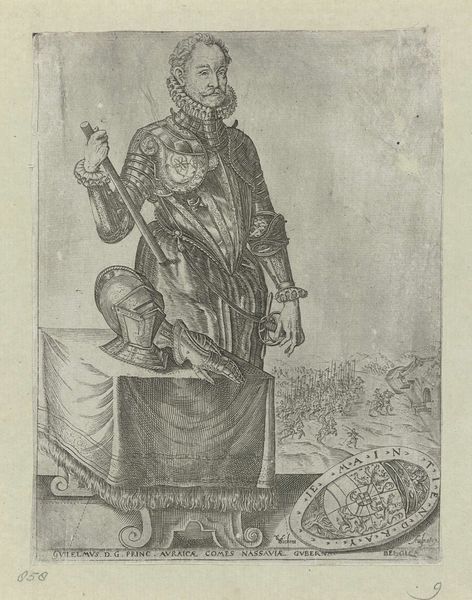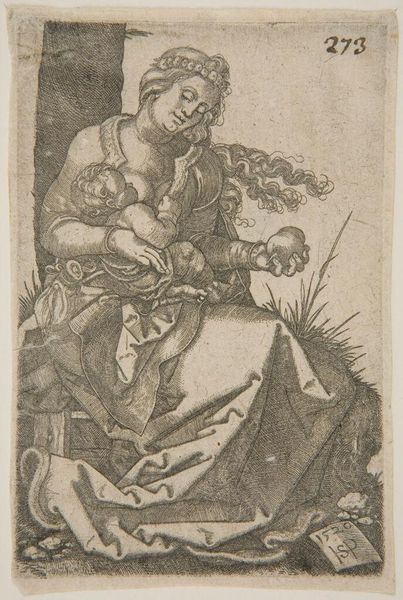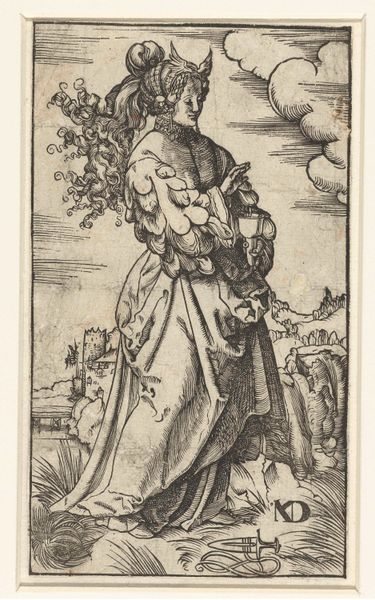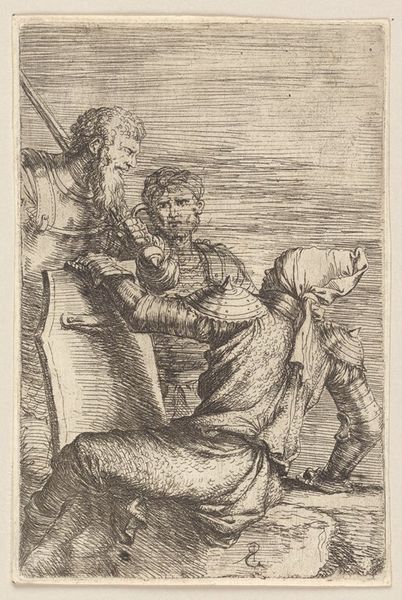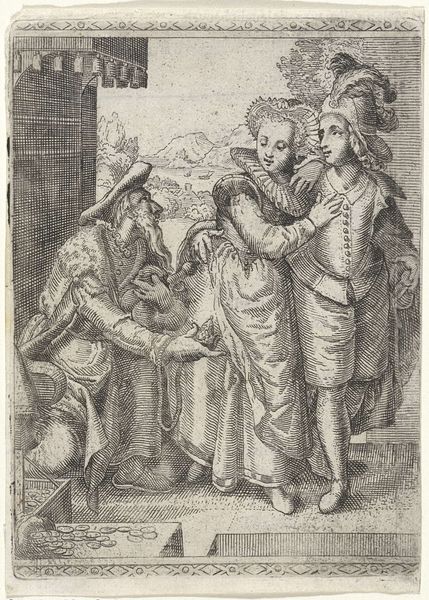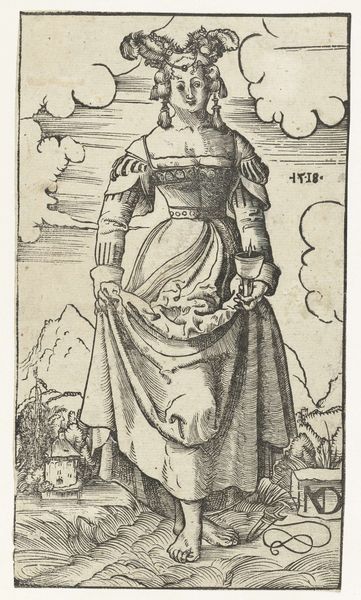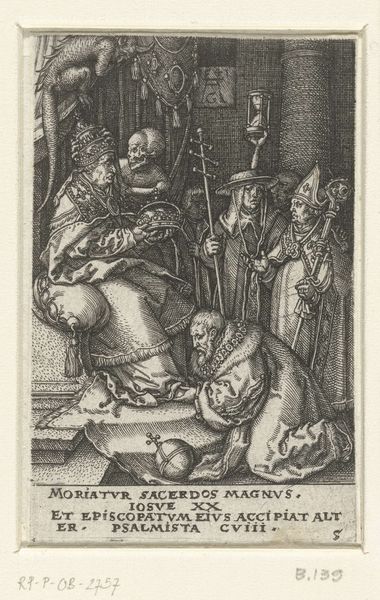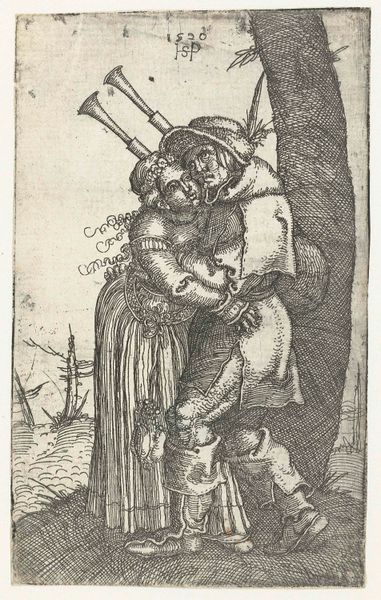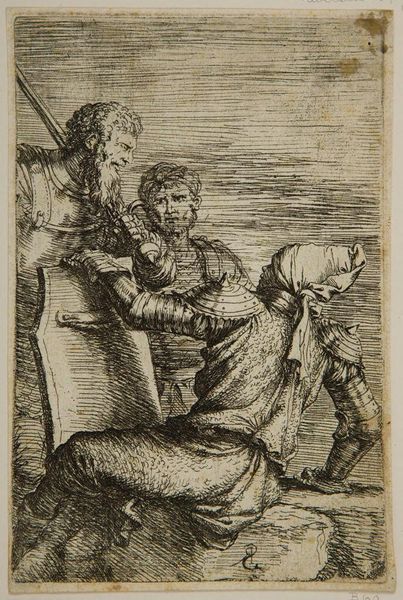
print, engraving
#
portrait
# print
#
history-painting
#
engraving
Dimensions: height 185 mm, width 142 mm
Copyright: Rijks Museum: Open Domain
Curator: Welcome. Before us hangs a print entitled "Portret van Willem I, prins van Oranje," dating from before 1611, attributed to Christoffel van Sichem I. Editor: The intricacy is striking; look at the weave of the armor rendered in such delicate lines. There's a formality to the piece, a heaviness even. Curator: Absolutely. It is an engraving, meant for dissemination, designed to project power. This image circulated during a pivotal moment in Dutch history, reflecting the rise of William of Orange as a figure of leadership and rebellion against Spanish rule. The portrait thus gains symbolic weight far beyond mere representation. Editor: Note how the process emphasizes clarity and precision, fitting the desired projection. The table draped with cloth and fringed also creates an interesting dialog between the labor involved in such production and the Prince's attire. I can't help but consider the material processes inherent to warfare, mirrored in this display of power and authority. The steel itself... Curator: The figure's steadfast gaze, the inclusion of his helmet on the table, and even the background hinting at battles underscore his authority, and all point to his image as a symbol of Dutch resistance. It’s a potent piece of political imagery carefully crafted. Consider where this print might have hung—likely in the homes of supporters, reaffirming loyalty and the righteousness of their cause. Editor: And note that the globe on the lower right ties into notions of territory and conquest that underpin the making of any state through violence and dispossession, as seen from Europe. What interests me particularly is thinking through the social processes which underpin not only this engraving, but more importantly, the industrial scale manufacturing that is a sine qua non for warfare during the period of Dutch revolt. Curator: That brings another layer of interpretation: as an object made for wide distribution, it aimed to generate widespread political support. Its artistry and the image of a leader are linked directly to a political and social agenda. Editor: It becomes clear the social project which gave rise to this print as it presents itself as material propaganda aimed to give physical, visual form to a particular, and in some sense fragile political project: the independence of the Dutch republic. A piece produced not in spite of war, but for war. Curator: Exactly. Looking at this portrait, one appreciates how art became such an effective vehicle for shaping public opinion and solidifying political identities during a revolutionary period. Editor: A powerful reminder that artistic practice can be interwoven inextricably within power, production and war.
Comments
No comments
Be the first to comment and join the conversation on the ultimate creative platform.
